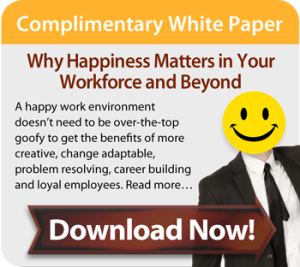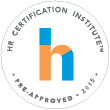 All it takes is one bad apple to spread rot the entire barrel. Perhaps you have experienced rotten behaviors and attitudes in the workplace. They are toxic and just like a bad apple, spread to others. All it takes is one or two toxic employees to break team bonds, sabotage earnings and swallow profit because of the hidden costs they leave in their wake.
All it takes is one bad apple to spread rot the entire barrel. Perhaps you have experienced rotten behaviors and attitudes in the workplace. They are toxic and just like a bad apple, spread to others. All it takes is one or two toxic employees to break team bonds, sabotage earnings and swallow profit because of the hidden costs they leave in their wake.
Toxic employees incur both direct and hidden costs for their employers, according to the report “Toxic Employees in the Workplace” from Cornerstone OnDemand. The report collected and analyzed data from 63,000 hired employees and approximately 250,000 observations of measurable, as well as hard-to-measure, costs.
The greatest costs that toxic employees incur are in terms of on-boarding and replacement costs:
- Toxic employees cost three times more than their non-toxic counterparts in terms of on-boarding.
- Once they are hired, they negatively affect the rest of the team members.
The research outlined in the report found that toxic employees take a major toll on other employees, which led to good employees becoming 54 percent more likely to leave the organization because of one toxic employee, costing employers lost productivity and high talent turnover.
With the high costs associated with these employees, what can leaders do to prevent toxic behavior in the workplace?
Ask the right hiring questions
The first line of defense against toxic employees is the application and hiring process, as interviewers can weed out toxic employees before they are brought into the team. During the interview process, leaders should focus on open-ended questions such as:
- Please share a time when you broke the rules and explain how your previous employers benefited.
- Please give an example of a time that you chose to use empathy during a conflict and the outcome was positive.
- Would you rather be right, or happy? Why?
- Tell me how you and another employee who did not get along well resolved your issues between yourselves and came out the other side with improved respect and understanding.
This type of questioning is effective because hiring is a complex process, and a candidate who may have a stellar resume and gives a good performance during the interview can still be a poor fit for the company. This is especially true when interviewers are out of touch with their culture’s behavior norms and company values. This type of questioning also addresses some problem areas for toxic candidates, making it tough for them to adequately answer these questions.
Identify the warning signs of toxic behavior.
Some behaviors that the report identified as potential warning signs include:
- Self-proclaimed “rule followers.” The report found these individuals to be 33 percent more likely to be toxic employees. This idea was addressed in TIGERS Among Us – Winning Business Team Cultures and Why they Thrive with a case study that discussed flexibility as an important empathy principle based on understanding when and how rules impact success. When a team lacks the opportunity to discuss cause and effect, it also affects organizational success. With extreme global competition, adherence to rules eclipses the ability to change in meeting an ever-changing market demand.
- Over confidence. Applicants who were overconfident about their technical proficiencies were found to be 43 percent more likely to engage in toxic behavior. In one of the TIGERS case studies of a post merger reorganization of a healthcare provider, empathy in patient services was tagged as an area for improvement. As a result, healthcare providers were asked questions with regard to how they deployed empathy in the last 60 days of their previous work. Some individuals with stellar resumes were stumped by the question, and new employees were able to be selected by not only their skills, but by their empathy attitudes.
- Poor attendance. Problematic attendance and dependability, as well as a lack of customer service orientation, are predictive of toxic behavior. Organizations that desire improved accountability from their employees need to look beyond what is cast in stone to improve customer service internally. How employees serve one another impacts external customer service. Toxic behavior that builds resentment between employees dribbles out to customers and a company’s brand.
Toxic behavior is dangerous for teams because it is contagious and can spread quickly from co-worker to co-worker, especially on larger teams. Incivility and poor empathy practices trigger hostile defense mechanisms in people. Once this form of negativity is allowed to spread, behaviors increase that diminish trust, interdependence, genuineness, empathy, risk and success, reducing high performance teams to ineffective teams.
Focus on the culture.
The organization’s workplace culture is an important determining factor for breeding or depleting toxic behavior. To increase employee satisfaction, employers can:
- Promote work/life balance. As previously mentioned in Deploy Employer Flexibility and Team Building Ideas to Increase Employee Satisfaction, employers can promote a better work/life balance by encouraging vacations, offering long-term sabbaticals and providing team-building activities for their team members.
- Invest in lower turnover rates. The past post Team Building Ideas to Keep Your Best Employees and Lower Turnover Rates suggests that employers can retain employees by conducting stay interviews, providing opportunities for volunteerism, investing in morale and offering more opportunities for additional responsibility.
- Hire a seasoned business consultant. According to Team Building Activities Reduce Workplace Incivility, incivility among employees presents itself in many forms, but a seasoned business consultant understands how to address these issues and teach team members how to avoid them.
Toxic employees affect the overall performance and workplace satisfaction of their team members, which can result in increased stress and burnout for team members, lowering productivity and increasing costs for leaders. To reduce these negative effects, leaders should learn to spot the warning signs for toxic behavior and implement team-building strategies or remove these individuals to save employee morale and lower both measureable and hard-to-measure costs associated with toxic employees.
Copyright TIGERS Success Series, Inc. by Dianne Crampton
About TIGERS Success Series, Inc.

 TIGERS Success Series is an Oregon Team Building Consultant headquartered in Bend, Oregon. As a Bend, Oregon team building consultant, TIGERS helps leaders build teams of employees who enjoy returning to work after a couple of days off and who are loyal and accountable for organizational success.
TIGERS Success Series is an Oregon Team Building Consultant headquartered in Bend, Oregon. As a Bend, Oregon team building consultant, TIGERS helps leaders build teams of employees who enjoy returning to work after a couple of days off and who are loyal and accountable for organizational success.
Based on a cooperative and collaborative team based system, TIGERS licenses HRD professionals and other consultants in the use of TIGERS proprietary team and leadership development resources. These resources include catalytic team building activities, team building facilitation methods, strategic problem solving methods and a 360 Team Climate Survey that measures the quality of trust, interdependence, genuineness, empathy, risk and success on teams for workforce development and change management purposes. For more information Contact Us.
The 15 HRCI recertification credits awarded for the 6 Principles Leadership Clinic is not an HRCI endorsement of the program but qualifies for 2015 recertification credit.